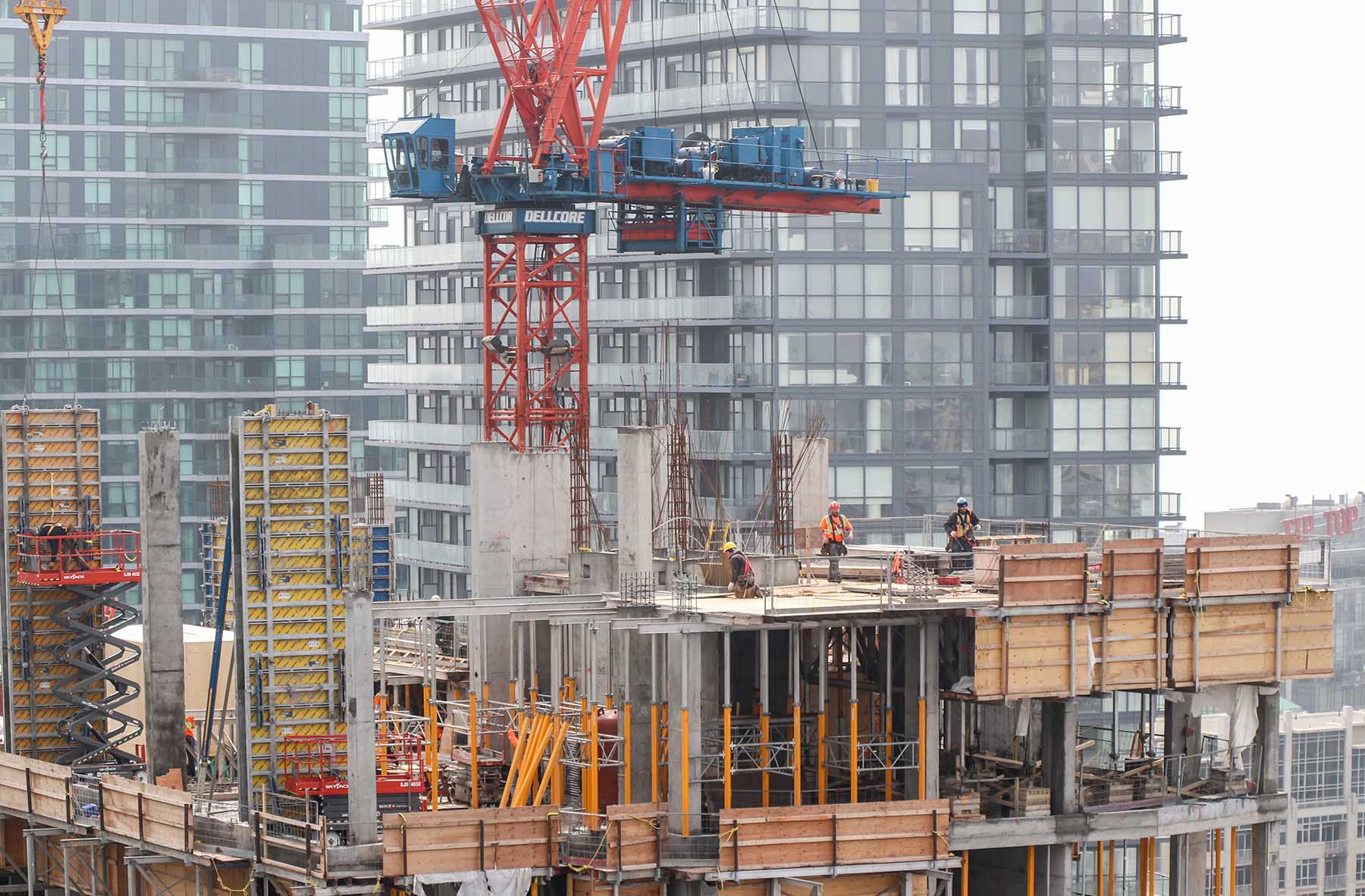

Close


Photo: Brandon / Adobe Stock
The 2020 housing market was a far cry from the norm.
With the COVID-19 pandemic kicking off in late March, the typically-busy spring market took a hit in sales while the mortgage-influencing overnight rate was cut multiple times. As the new home industry grappled with newly imposed construction restrictions, sales dropped 80 per cent yearly in April according to the Building Industry and Land Development Association (BILD).
By the end of 2020, Simon S. Mass, CEO of The Condo Store (TCS), anticipated that disruptions caused by COVID-19 would be a temporary situation and that “we’ll most likely return to normal much sooner than most people expect.”
A little over a year since that prediction was made, it appears that Toronto’s new housing market has normalized in some ways, but not in others.
TCS’s COO, John Mehlenbacher, said that the housing market is certainly close enough to normal now to perceive things outside the COVID lens. This sentiment is reflected in people’s perceptions of the market, but not necessarily the market itself. The volume of real estate transactions and price growth that has been recorded, Mehlenbacher pointed out, has been varying too much to be considered “regular conditions.”
“In pre-construction — where the craziness was less than the resale market throughout the pandemic — there are lingering effects, but the basics of the market continue to be as normal as would be expected given the long tail of this pandemic,” he said.

Photo: John Mehlenbacher, COO of The Condo Store (TCS)
Industry issues such as significant increases in material costs, red tape in government and some uncertainty about pricing models are still fallouts from an unprecedented economic situation that we are not clear of just yet, Mehlenbacher added.
If you’re trying to gauge whether the market has fallen back to normal patterns, making comparisons to 2020 or 2021 may not provide an effective long-term analysis, as these numbers will always be off, Mehlenbacher said. For instance, if a monthly sales count fails to break an all-time market record, it does not mean the situation is worsening, he pointed out.
“Our firm has research that tracks long-term pricing growth, but we have caveats and qualifiers that we place on all the data from the pandemic era,” said Mehlenbacher. “For pricing, it is expected to keep increasing, but along normal curves with the 2020 spike taken as an outlier, not to be compared against for solid long-term analysis.”
Last year, there was plenty of conversation in the real estate industry about the Urban Exodus movement and the transfer of buyers outside of city regions to rural or suburban areas. Remote working enabled residents to migrate to other cities and provinces in search of bigger homes and more space at a cheaper price point. Although there was speculation that cities would not bounce back as they did pre-pandemic as a result of the Exodus, Mass predicted that the Toronto market would show resilience in the long-term.

Photo: James Bombales
For Mehlenbacher, the realization that interest in the city would survive happened a couple weeks into the pandemic, but this took a while to actualize and is still ongoing.
“But if we are talking about the long-term, we can’t get too bogged down with week-to-week or month-to-month data in a vacuum. We need to analyze all factors in a longer window and pricing is a great way to gauge what the market thinks of current conditions and the long-term value in a market,” said Mehlenbacher.
“And, as you know, pricing in the pre-construction market remains strong and growing. Interest in all areas of Toronto residential real estate is solid,” he added.
Ontario has avoided a COVID-19 lockdown since the early months of 2021. Provincial restrictions on sales centres, open houses and construction activity lifted throughout the spring and summer, letting operations run mostly as normal. For business professionals in real estate, the pandemic has created permanent change in the way new homes are bought and sold. The mass acceptance and use of e-signatures, for example, was one method that the new home industry adopted in light of limited contact with clients.
“The way we do business in this industry will be changed forever, but I believe for the better,” said Mehlenbacher. “We were forced to adapt to new ways to get things done, and once we no longer have to do those things, only the elements that are actually effective will stick around.”




